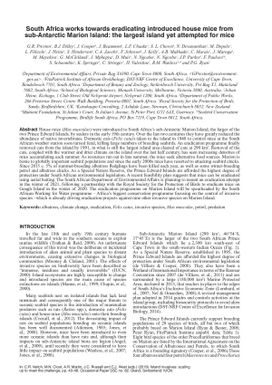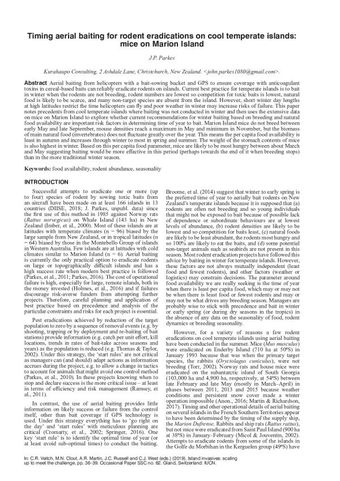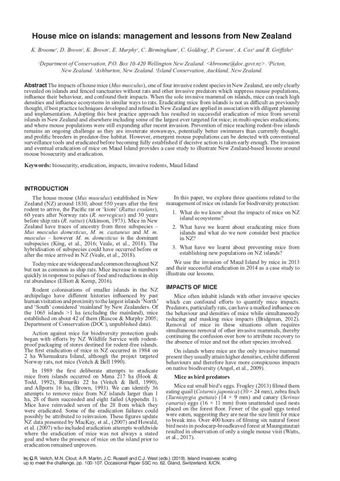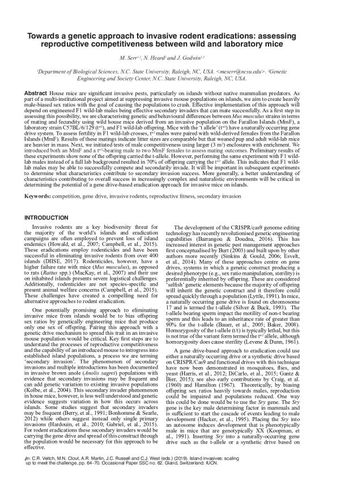South Africa works towards eradicating introduced house mice from sub-Antarctic Marion Island: the largest island yet attempted for mice
- Description:
- House mice (Mus musculus) were introduced to South Africas sub-Antarctic Marion Island, the larger of the two Prince Edward Islands, by sealers in the early 19th century. Over the last two centuries they have greatly reduced the abundance of native invertebrates. Domestic cats (Felis catus) taken to the island in 1948 to control mice at the South African weather station soon turned feral, killing large numbers of breeding seabirds. An eradication programme finally removed cats from the island by 1991, in what is still the largest island area cleared of cats at 290 km2. Removal of the cats, coupled with the warmer and drier climate on the island over the last half century, has seen increasing densities of mice accumulating each summer. As resources run out in late summer, the mice seek alternative food sources. Marion is home to globally important seabird populations and since the early 2000s mice have resorted to attacking seabird chicks. Since 2015 c. 5% of summer-breeding albatross fledglings have been killed each year, as well as some winter-breeding petrel and albatross chicks. As a Special Nature Reserve, the Prince Edward Islands are afforded the highest degree of protection under South African environmental legislation. A recent feasibility plan suggests that mice can be eradicated using aerial baiting. The South African Department of Environmental Affairs is planning to mount an eradication attempt in the winter of 2021, following a partnership with the Royal Society for the Protection of Birds to eradicate mice on Gough Island in the winter of 2020. The eradication programme on Marion Island will be spearheaded by the South African Working for Water programme Africas biggest conservation programme focusing on the control of invasive species which is already driving eradication projects against nine other invasive species on Marion Island.
- Display date:
- 2019
- Collections:
- Secretariat of the Pacific Regional Environment Programme (SPREP)
- Publisher:
- International Union for Nature Conservation (IUCN)
- Content partner:
- Secretariat of the Pacific Regional Environment Programme (SPREP)
- Availability:
- Not specified
-
Copyright status: All rights reservedFind out more about what you are able to do with this itemThis item is all rights reserved, with means you'll have to get permission from Secretariat of the Pacific Regional Environment Programme (SPREP) before using it. For more information, please see our use and reuse page.What can I do with this item?Non-infringing useNZ copyright law does not prevent every use of a copyright work, and this item may be hosted by an international institute or organisation. You should consider what you can and cannot do with a copyright work.No sharingYou may not copy and/or share this item with others without further permission. This includes posting it on your blog, using it in a presentation, or any other public use.No modifyingYou are not allowed to adapt or remix this item into any other works.No commercial useYou may not use this item commercially.
Related items
Welcome and warm Pasifik greetings
The information on this site has been gathered from our content partners.
The names, terms, and labels that we present on the site may contain images or voices of deceased persons and may also reflect the bias, norms, and perspective of the period of time in which they were created. We accept that these may not be appropriate today.
If you have any concerns or questions about an item, please contact us.



